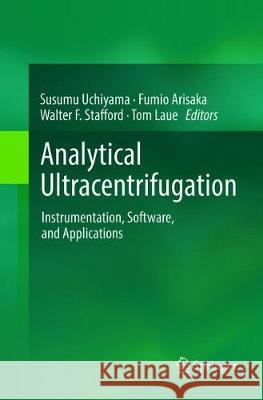Analytical Ultracentrifugation: Instrumentation, Software, and Applications » książka
topmenu
Analytical Ultracentrifugation: Instrumentation, Software, and Applications
ISBN-13: 9784431567455 / Angielski / Miękka / 2018 / 532 str.
Analytical Ultracentrifugation: Instrumentation, Software, and Applications
ISBN-13: 9784431567455 / Angielski / Miękka / 2018 / 532 str.
cena 586,33 zł
(netto: 558,41 VAT: 5%)
Najniższa cena z 30 dni: 578,30 zł
(netto: 558,41 VAT: 5%)
Najniższa cena z 30 dni: 578,30 zł
Termin realizacji zamówienia:
ok. 20 dni roboczych.
ok. 20 dni roboczych.
Darmowa dostawa!
Kategorie:
Kategorie BISAC:
Wydawca:
Springer
Język:
Angielski
ISBN-13:
9784431567455
Rok wydania:
2018
Wydanie:
Softcover Repri
Ilość stron:
532
Oprawa:
Miękka
Wolumenów:
01











